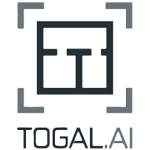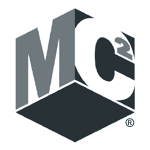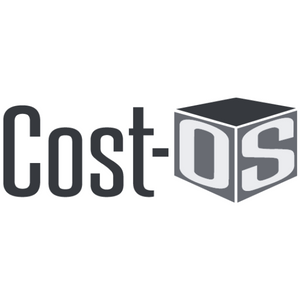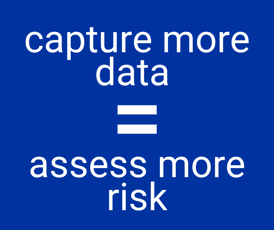How Capturing and Analyzing Your Data Mitigates Risk in Preconstruction

With an annual margin of return of only 2.7% compared to other industries’ 10 to 25 percent, general contractors face significantly higher risks without the corresponding financial growth seen in other sectors. As a result, mastering how to mitigate risk in construction is vital for a successful business. Profitability, project planning, and execution are increasingly challenged by growing building complexity, tighter deadlines, environmental demands for sustainability, and ongoing labor shortages.
Alarmingly, nearly 80% of AEC firms believe these risks are increasing.
Currently, 9 out of 10 construction projects exceed budget, and 75% fail to meet timelines. If risk increases, what will these statistics look like in the future if we don’t take any action to mitigate the growing risks?
Studies show that 70% of problems arise from design and engineering issues, while 48% are due to miscommunication. Much of this boils down to data — specifically, the lack of, misuse of, or poor-quality data.
The problem arises from the inconsistency in data capture. Even though technology is available that allows construction teams to mitigate risk through data utilization, nearly 100% of the construction data being collected isn’t being utilized to drive better project decisions. (FMI/Autodesk)
Jeff Sample, Contech evangelist and host of the ConTechCrew podcast says, “Too often in the industry, we’re looking over our shoulder and we’re walking into the next wall.” Leveraging our construction data enables us to identify risks, predict outcomes, and become more efficient in our building processes.
And the place to start is during preconstruction. Standardizing the way we do precon through digitization of construction data will make the industry more profitable, as well as help us build better buildings.
Using Drones and Laser Scanners
The preconstruction team at PARIC Corporation, one of the Midwest’s largest privately owned companies, utilizes drones and laser scanners to survey project sites, enabling them to understand site conditions and project constraints upfront.
Then, using Microsoft Power BI, they share this data with the design team, owners, and subs, making it easier to collaborate and defend the decision-making process.
Collecting data through digital technology enables PARIC’s preconstruction team to display real-time changes in the estimate and how these changes impact cost and project timelines.
Artificial Intelligence
AI and large language models are not only helping to build complex Excel formulas and macros, but they are also automating manual estimating tasks, which frees up time for preconstruction teams to focus on adding value to projects.
For example, AI-driven takeoff software Togal.AI has sped up the takeoff process by up to 80 percent, saving estimators 90 minutes per sheet. Takeoff is one of the most time-consuming and higher-risk tasks for an estimator. This revolutionary technology reduces manual takeoff and data entry, while also assisting in catching overlooked details.
Jennifer Kolp, a senior estimator at VJS Construction, says, “Togal.AI has helped our team to collaborate with trade contractors. We are now able to send them a link through Togal to the takeoff, and they can collaborate with us. This greatly increases the accuracy of our estimates.”
Cloud-Based Construction Data Software
- Collaboration between all stakeholders in the earliest phases of a project’s lifecycle is proving to help mitigate risk later.
- Cloud-based construction estimating tools allow project teams to collaborate on estimates and share real-time data.
For example, DESTINI Estimator is a database-driven estimating platform that captures and standardizes the storage of your construction data. After implementing it, Robbie Gronbach, LEED AP and Director of Preconstruction at Florida-based Willis A. Smith, says, “For the first time, we can work together as one team, which is a huge stress reliever for everybody. Having all that information stored on one platform will make it incredibly easy to go back through and collect certain pieces of information. That will ultimately improve our whole approach. We’ll be able to make project decisions based on bid data instead of guessing.”
Analysis, Benchmarking & Prediction
As an industry, we tend to approach every project as if we’ve never completed a similar project before. This leads us to focus primarily on deliverables. When we run out of time to finalize these deliverables properly, it increases the gaps between different phases of the construction project.
Stewart Carroll, Chief Customer Officer at Beck Technology, says, “At the end of the schematic phase, instead of adjusting the data based on changes, we might redo a complete takeoff, and this repetition eats up time. As an industry, we spend a lot of time on low-value activities.”
Rather than spending that time repeating the same tasks, implementing technology that does it for you, the way you want it done the first time, and capturing that data and using it to drive the project forward, you can in return focus on high value activities that will improve the quality of the building, implement sustainable building methods and materials, and make the job site safer.
Stewart says we should instead “proactively find ways to either build the building more effectively or efficiently and spend more time with subs to understand how they build it right the first time, so they don’t have to come back to the project to fix things,” says Stewart.
In essence, we should be addressing the idea of integrating preconstruction solutions. This involves minimizing the number of tools used, reducing manual data entry, and automating data transfer from GMP to the field. By focusing on high-value activities and improving our approach to data analysis and management, we can enhance our preconstruction processes.
In turn, contractors can become more profitable and deliver a better product.
A database-driven cost estimating software, such as DESTINI Estimator, that captures all construction data eliminates many of the manual tasks that introduce risk in the preconstruction phase.
Mike Hurley, a chief estimator at Clark Construction Group, one of the country’s largest builders, says, “Having DESTINI Estimator as a common platform has improved our internal preconstruction discussions as well as given us consistency when communicating with project stakeholders. Being able to access and leverage our preconstruction cost data in DESTINI Estimator allows us to provide feedback and solutions quickly and easily to our clients.”
Having that cost history readily available to the team and using templates to begin a conceptual estimate means you don’t have to ever start each new estimate from scratch, and you no longer must walk into that next wall, as Jeff Sample puts it.
When we remove the barriers that prevent people from working together and sharing information, it reduces the cost of the project, reduces risk, and increases the time the preconstruction team can perform high-value activities.
The centralization of data will be a game-changer for today’s construction businesses, and how they adapt to it will be a deciding factor in their future ability to win work. By creating entirely new processes and workflows in which technology plays a vital role, general contractors (GCs) have already empowered themselves to do much more in less time.
Note: This article was originally written and featured in DCD Magazine.

-1.png?width=112&height=112&name=image%20(4)-1.png)














